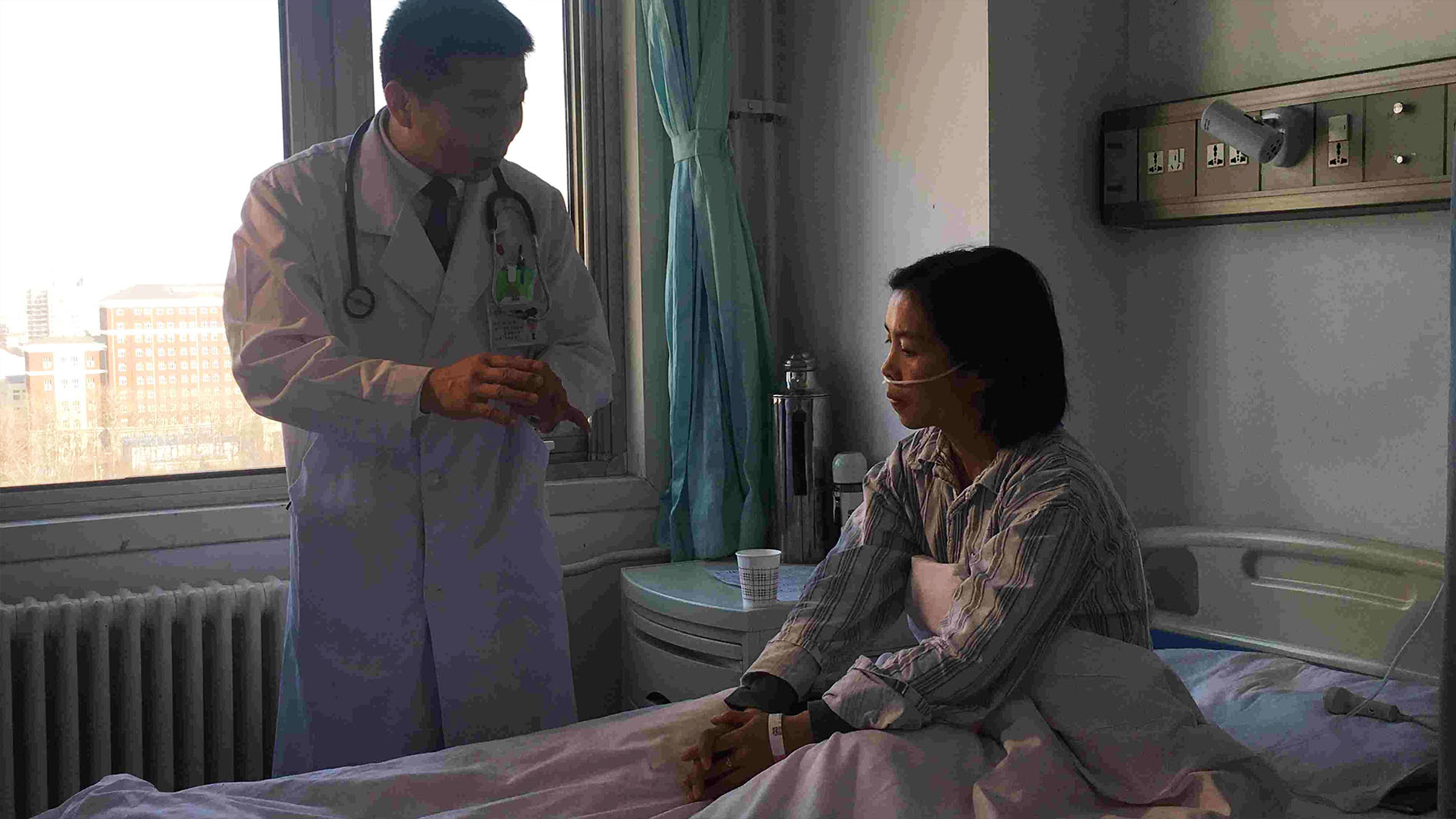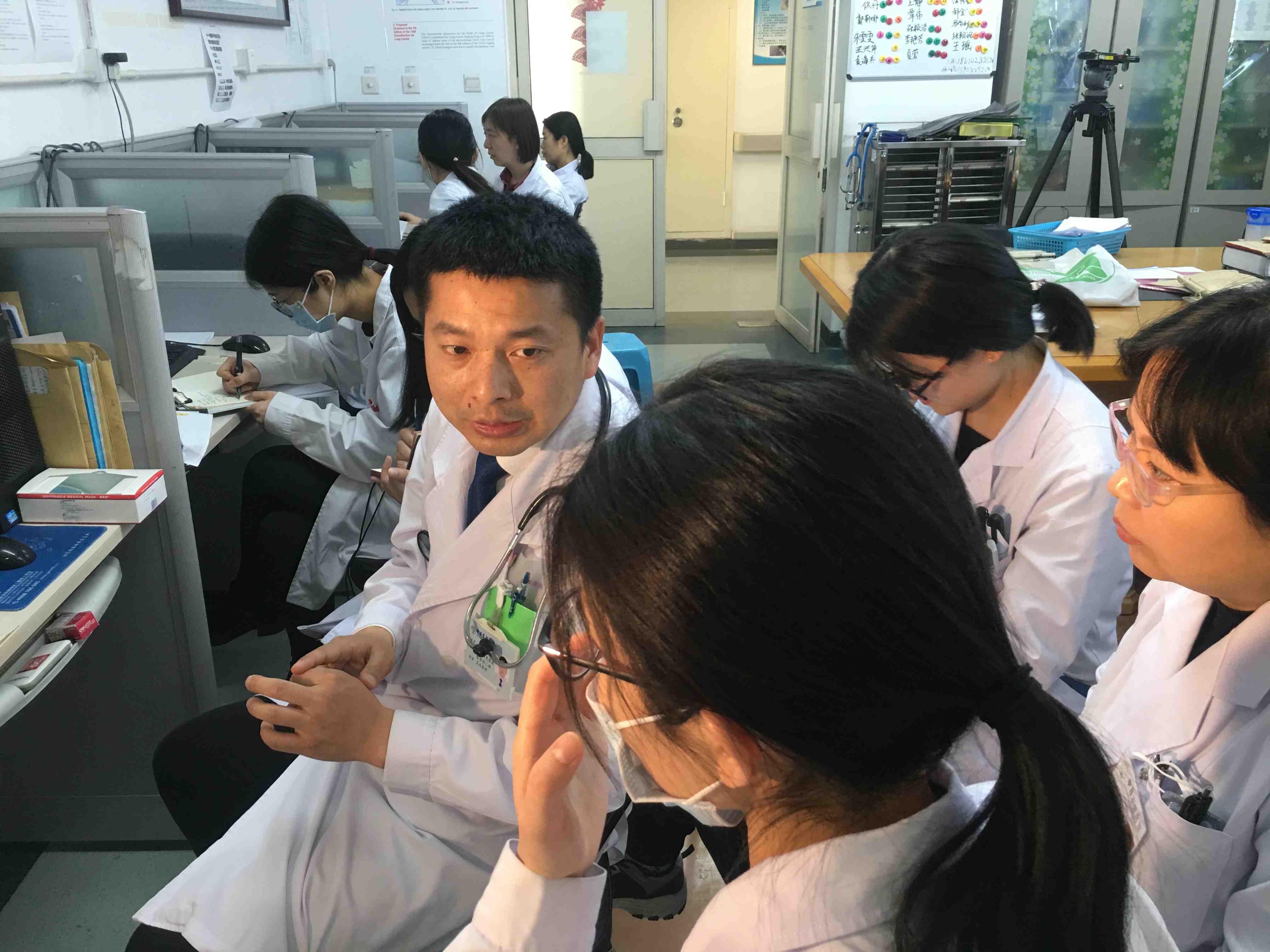
Health
17:21, 18-Dec-2018
Reforms aim at balancing medical resources
Updated
16:51, 21-Dec-2018
By Wu Guoxiu
03:18

As China further reforms its medical industry, big hospitals are being asked to help their smaller counterparts. This comes as public distrust in lower-level hospitals continues. Many patients will travel across the country and wait for weeks, all in the name of getting admitted to a trusted medical center.
Lin Yuefei was transferred to this first-class public hospital in Beijing from southwest China's Guizhou Province.
"The provincial hospital's doctor told me to contact a doctor here through WeChat. Then this hospital arranged a bed for me," Lin said.
Lin went through a union set up by the China-Japan Friendship Hospital in 2017. The hospital's head, Sun Yang, says it's a network to share medical resources among medical centers of different levels and disease specializations.

Lin Yuefei waits for lung surgery at China-Japan Friendship Hospital in Beijing. /CGTN Photo
Lin Yuefei waits for lung surgery at China-Japan Friendship Hospital in Beijing. /CGTN Photo
"Through the hospital union, doctors discuss whether a patient needs a remote group consultation to become our outpatient, or if they should be hospitalized. Most went to emergency rescue or ICU directly," said the dean.
However, getting an appointment at Beijing's top-class hospitals is not cheap, nor does it happen overnight.
In the cancer hospitalization area, Shi Changxing from Zhejiang Province said, "We trust the medical ability in this hospital, but we waited 20 days to get my mother in here."
Hang Yong from Shanxi Province encountered a similar situation. "My son stays in a nearby hotel for three or four hundred yuan per night, parking is ten yuan every hour, and food is another cost. If the hospital near my home could treat my disease, I would never have needed to come to Beijing," complained the senior.
But doctors said that some patients don't need to rush to the bigger facilities. Tao Xincao, chief physician of the Respiration and Critical Illness Department at the hospital, said "I see about 70 patients every day during an outpatient shift, for five or ten minutes each. But half of them can have their diseases treated in lower-level hospitals."

Doctors work at China-Japan Friendship Hospital. /CGTN photo
Doctors work at China-Japan Friendship Hospital. /CGTN photo
The government is guiding people to closer and smaller hospitals at first, and trying to ensure that they can access bigger and more resourceful ones when they need. That's the logic behind a so-called "tiered medical system" that's being set up across the country.
China's health authority shows 19 million patient transfers nationwide in 2018. More than 10 million were from small to large hospitals, but that number is down 15 percent compared with that of last year.
"There were eight million patients transferred from big medical centers to smaller and community-level hospitals. That number is up 83 percent over last year, and proves the tiered medical system has proven results," said Jiao Yahui, deputy chief of the Medical Administration Bureau of China's National Health Commission.
But, more people trust big Chinese hospitals than small ones.
Lin said she'd tell others to go straight to big medical centers. "I was mistakenly diagnosed at first when the county hospital treated me for an infection. Ten days later, I went to the provincial hospital. They said I needed to be hospitalized."
But Dr. Tao explained, "Doctors first exempt normal diseases and then think of abnormal ones. She needs to go through the process even if she came here directly."
To better build up the tiered-medical system, China is training medical staff intensively for community-level hospitals and asking big ones to share resources via the Internet. But many patients say the system won't be complete unless it wipes out public fear of small hospitals.
(Cover: Lin Yuefei listens to a doctor's advice in a hospital room. /CGTN photo)

SITEMAP
Copyright © 2018 CGTN. Beijing ICP prepared NO.16065310-3
Copyright © 2018 CGTN. Beijing ICP prepared NO.16065310-3